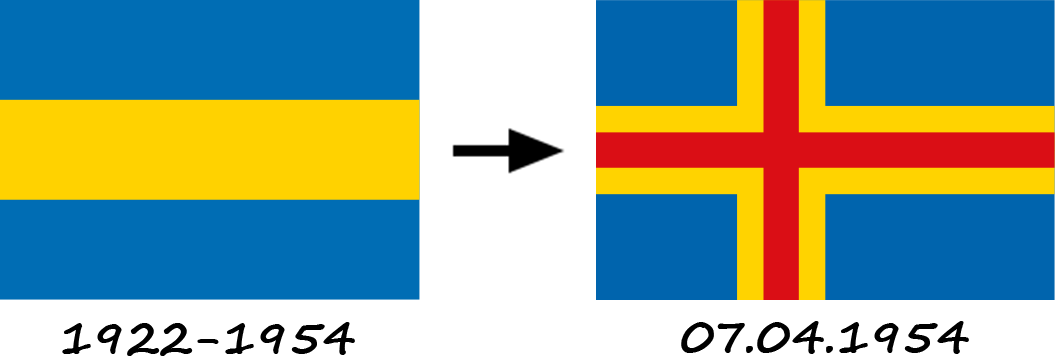The flag of the Åland Islands consists of a red Scandinavian cross circled in yellow on a blue background. The flag was adopted in 1954 and was first raised in the capital, Mariehamn, on April 3 of that year.
The flag of the Åland Islands consists of a red Scandinavian cross circled in yellow on a blue background. The flag was adopted in 1954 and was first raised in the capital, Mariehamn, on April 3 of that year.
The flag of the Åland Islands consists of the Swedish flag, including a red cross symbolizing Finland. However, it was originally intended that the flag of the Åland Islands would be the opposite of the Swedish flag, which would have a yellow field and a blue cross. But later it was banned. Today, blue and white are considered Finnish colors, but in the early days of Finnish nationalism, the red and yellow of the Finnish coat of arms were also present. The current flag of the Åland Islands consists of three colors:
When Finland declared its independence from Russia in 1917, the Ålanders feared for their Swedish language and culture and mobilized for reunification with Sweden. The question of the Åland Islands was finally resolved after much debate by the United Nations in 1921. The Åland Islands would become part of Finland, but would have autonomy.

Since 1922, an unofficial blue-yellow-blue flag was used. There were several versions of the flag, the most common of which had equal horizontal stripes. Another version had a narrower yellow stripe that appeared when the vertical yellow stripe from the cross on the Swedish flag was removed. Blue and yellow were obviously the favorite colors for both the flag and the coat of arms.
In 1935, the use of the unofficial horizontal bicolor flag of blue-yellow-blue, which had been in use before autonomy, was banned. However, an official flag was proposed with the design of a Scandinavian cross on a blue field with a yellow and blue cross added inside. However, this proposal was rejected by the President of Finland as something too similar to the Swedish flag. The alternatives considered were the old blue, yellow, and blue ribbon, the Finnish flag with a yellow cross inside, and a variant with a red cross added to the Swedish flag.
The flag of the Åland Islands, known as the blue-yellow-red Scandinavian cross, was adopted as the official symbol of the islands in 1954. Although the red color initially caused some controversy on the grounds that it did not reflect local tradition, it was possible to show that the colors of the flag were derived from the provincial coat of arms and the colors of the Finnish coat of arms. Heraldry officials also established that the flag design had been used by the Swedish king, which underscored its legitimacy. According to the law, the flag's proportions are set at 17:26, and its official days are Åland Flag Day, the last Sunday in April, and Autonomy Day, June 9. The law also requires that ships operated by the island government use the Åland flag. Thus, the flag serves as a public and national flag, as well as symbolizing the autonomy of the islands.